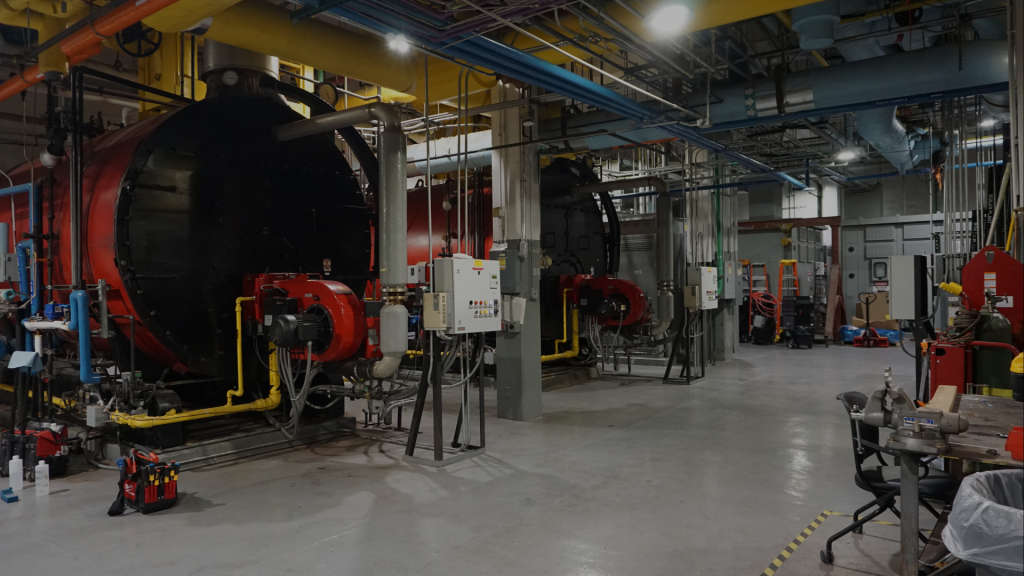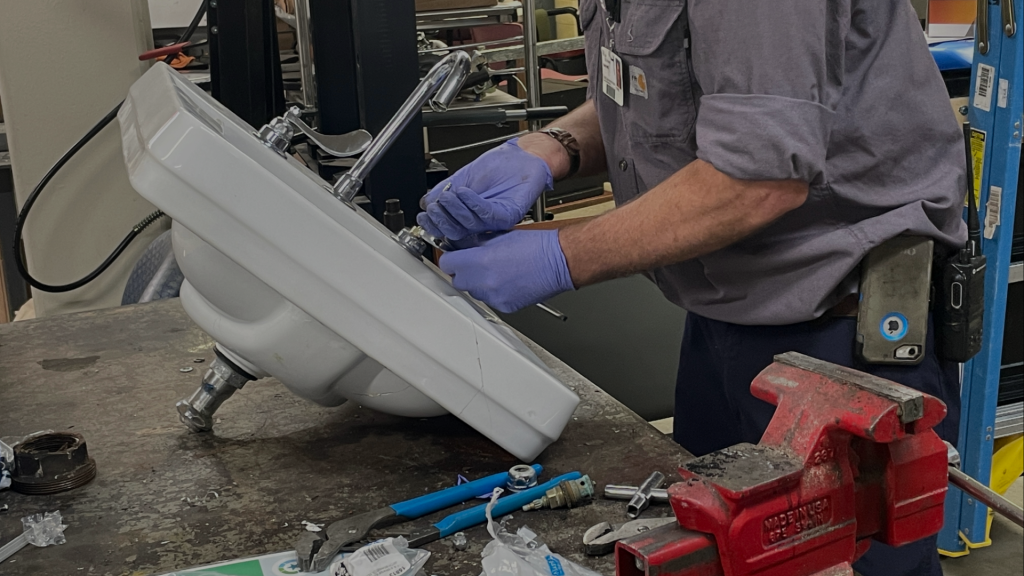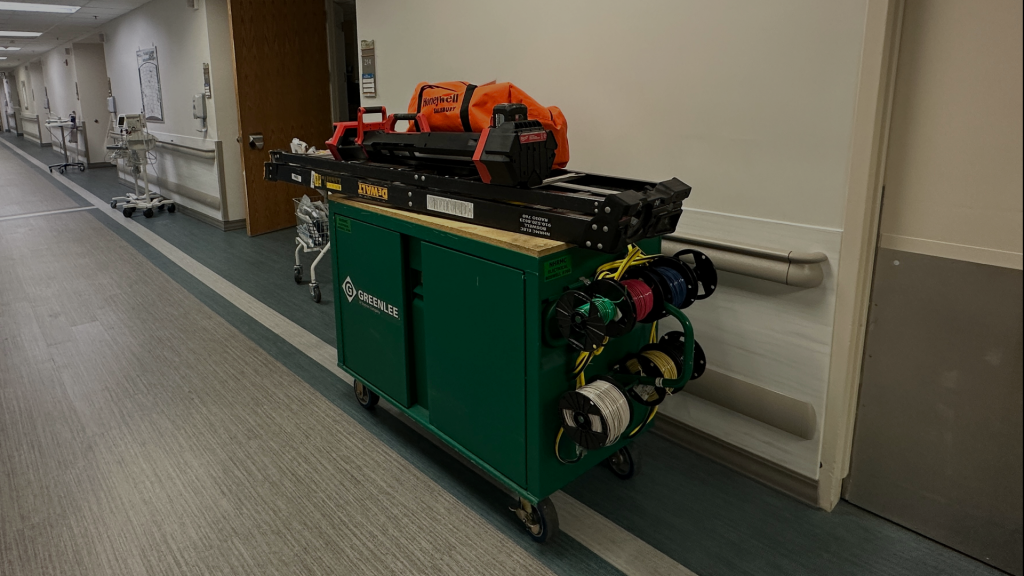If you’ve been looking for a career that’s both challenging and deeply rewarding, consider healthcare, one of the most complex and highly regulated industries in the world, second only to nuclear energy.
You may have experience in building maintenance or facilities operations, and are wondering what it’s like to move into the healthcare sector. If so, we’ve got you covered.
Healthcare facilities management—often shortened to HFM—is an exciting field that plays a pivotal role in keeping patients safe and healthcare facilities running smoothly.
But what exactly is healthcare facilities management, and how is it different from other facility management professions?
This article provides an introduction to healthcare facility management.

Table of contents
What do healthcare facility professionals actually do?
At its core, healthcare facility management is about ensuring that hospitals, clinics, and other medical facilities operate safely and efficiently. It’s more than just fixing lights or maintaining HVAC systems; it’s about creating a safe environment where patient care is the top priority.
What makes this field different?
It’s the mission. In traditional facility roles, you maintain buildings and other structures. In healthcare, you’re part of something bigger. You help create a place where people heal and where every detail matters. HFM is pivotal in keeping everything running at peak performance and improving patient outcomes at every level.
Healthcare facility managers handle everything from work orders and routine maintenance to compliance, infection control, emergency planning, and construction and renovation. They coordinate HFM teams, interact with other hospital departments, and make sure all building systems, including life safety systems, are up to code.
In this role, they might oversee staff members, manage vendors, track asset management, or ensure that the facilities management department complies with all necessary regulatory requirements.
Healthcare facility maintenance technicians are the hands-on experts who make it all happen behind the scenes. They perform essential tasks, such as inspecting testing, and maintenance (ITM) of equipment, repairing critical systems, and responding to urgent maintenance requests that could impact patient safety or comfort.
From handling boiler and chiller operations to troubleshooting electrical issues, their work keeps everything running smoothly. These technicians also play a key role in documenting work orders, following preventive maintenance schedules, and supporting compliance with agencies like The Joint Commission or OSHA.
In many ways, they’re the frontline defenders of a hospital’s infrastructure.

Hospitals use specialized equipment to maintain a safe environment.
Healthcare facilities are loaded with specialized systems, far beyond what you’d find in a typical building. When working in a hospital, you will maintain specialized systems that support a safe patient care environment. These systems help ensure small issues don’t become major disruptions, especially in high-stakes areas like the emergency room (ER) or an intensive care unit (ICU).
In addition to the responsibilities listed below, you’ll use computerized maintenance management systems (CMMS) to schedule tasks, log repairs, track inventory, and monitor predictive maintenance alerts.
And if you already have experience with preventive maintenance plans or previous work in hospital maintenance, it puts you ahead of the curve! And your experience positions you to make an impact from day one.

If you have HVAC credentials, your responsibilities in a hospital may include the following:
- Calibrating and maintaining air handling units (AHUs) to regulate temperature, humidity, and filtration in critical areas and departments
- Balancing airflow systems to ensure proper positive or negative pressure
- Servicing variable air volume (VAV) boxes and related components to adjust air delivery based on occupancy or room type
- Troubleshooting and optimizing building automation systems (BAS) to manage energy use and climate control
- Maintaining chilled water systems, boilers, and dehumidifiers to support environmental requirements for patient safety
- Monitoring smart sensors and controls that track airflow, temperature, and humidity across different hospital zones
- Supporting emergency power systems related to HVAC to ensure critical systems continue functioning during power outages
If you have electrical experience, your responsibilities in a hospital may include the following:
- Troubleshooting and repairing electrical systems that power essential hospital equipment and critical care areas
- Inspecting and maintaining lighting systems and control panels throughout patient rooms, corridors, surgical suites, and support areas
- Managing power distribution systems and electrical panels to ensure stable and efficient power flow across departments
- Testing and maintaining emergency power systems, including automatic transfer switches (ATS) and generators, to meet regulatory codes and ensure reliability during outages
- Supporting electrical infrastructure for specialized systems, such as nurse call systems, fire alarms, and medical imaging equipment
- Performing preventive maintenance on motors, relays, circuit breakers, and wiring to reduce downtime and maintain safety
What if you don’t have HVAC or electrical experience?
Even if you haven’t worked in a hospital before, your skills from other industries, like commercial, residential, or industrial maintenance, are still valuable.
Many technicians come into healthcare from other trades and learn on the job through mentorship, cross-training, and certification programs.
Some hospitals provide hands-on training to help you get familiar with specialized systems like building automation, pressure control, or emergency power. The key is being detail-oriented, safety-focused, and ready to learn. With the right attitude and a commitment to patient-first operations, you can build a rewarding career in this field.
In HFM, regulatory compliance is the job.
In healthcare facility management (HFM), compliance is part of every repair, inspection, testing, and maintenance task.
It all ties back to a bigger goal: protecting patient lives and maintaining a safe, functional environment of care. That’s why regulatory compliance is one of the most critical (and constant) parts of daily operations.
You’re not just fixing a leaky pipe or swapping a filter. You’re helping ensure infection control in sterile areas, fire safety in high-traffic zones, and uninterrupted power to life-saving machines.
Facility managers and technicians work closely with accrediting and regulatory bodies, such as the Joint Commission (TJC) and the Centers for Medicare & Medicaid Services (CMS). These organizations define standards for everything from equipment maintenance and emergency preparedness to air exchange rates in surgical suites.
Inspections and on-site surveys happen regularly, and failure to meet compliance standards can have serious consequences: citations, fines, loss of funding, or even temporary shutdowns.
More importantly, a lapse in compliance could compromise patient outcomes or the safety of clinical staff.

Training and Resources to Get Started
Not sure how to get into healthcare facilities management?
There are clear paths to help you break into the field. Whether you’re coming from general maintenance, construction, or another skilled trade, specialized training can bridge the gap and prepare you for the unique challenges of working in a healthcare environment.
Start by looking into educational programs focusing on healthcare engineering, facility operations, or environmental services in clinical settings. Short-term certifications can also give you a competitive edge.
For example, the American Society for Health Care Engineering (ASHE) offers programs like Certified Health Care Physical Environment Worker (CHEP), Certified Health Care Constructor (CHC), and the Certified Healthcare Facility Manager (CHFM) credential—all of which demonstrate your commitment to the field and prepare you for real-world compliance scenarios.
ASHE also provides HFM content, including eLearning modules, technical publications, and compliance guides tailored for hospital environments. These resources help you understand the codes, standards, and safety protocols specific to healthcare facilities.
Many facility managers and technicians begin by shadowing experienced professionals on the job, attending local workshops, or participating in training offered by regional partners, such as state hospital associations or healthcare coalitions. Some hospitals even offer apprenticeship-style learning opportunities, giving you hands-on experience while you earn certifications.
This article was about healthcare facilities management.
If you’ve ever wondered what’s next in your maintenance career, consider stepping into healthcare facility management. There’s a network of HFM professionals already doing this work, and they need more people like you.
And if you’re already working in facilities management, know this: your skills are transferable. With the right training and mindset, you could directly impact people’s lives.
The future of HFM is here. Will you be part of it?

Latest Posts
Post Categories
- Codes and Regulatory Compliance (33)
- Empowerment (22)
- Featured (4)
- Healthcare Facility Management (3)
- Healthcare Facility Management Administration (6)
- Leadership (24)
- Learning and Development (2)
- Operations & Maintenance (18)
- Soft Skills (9)
- Troubleshooting (1)
- Uncategorized (2)

